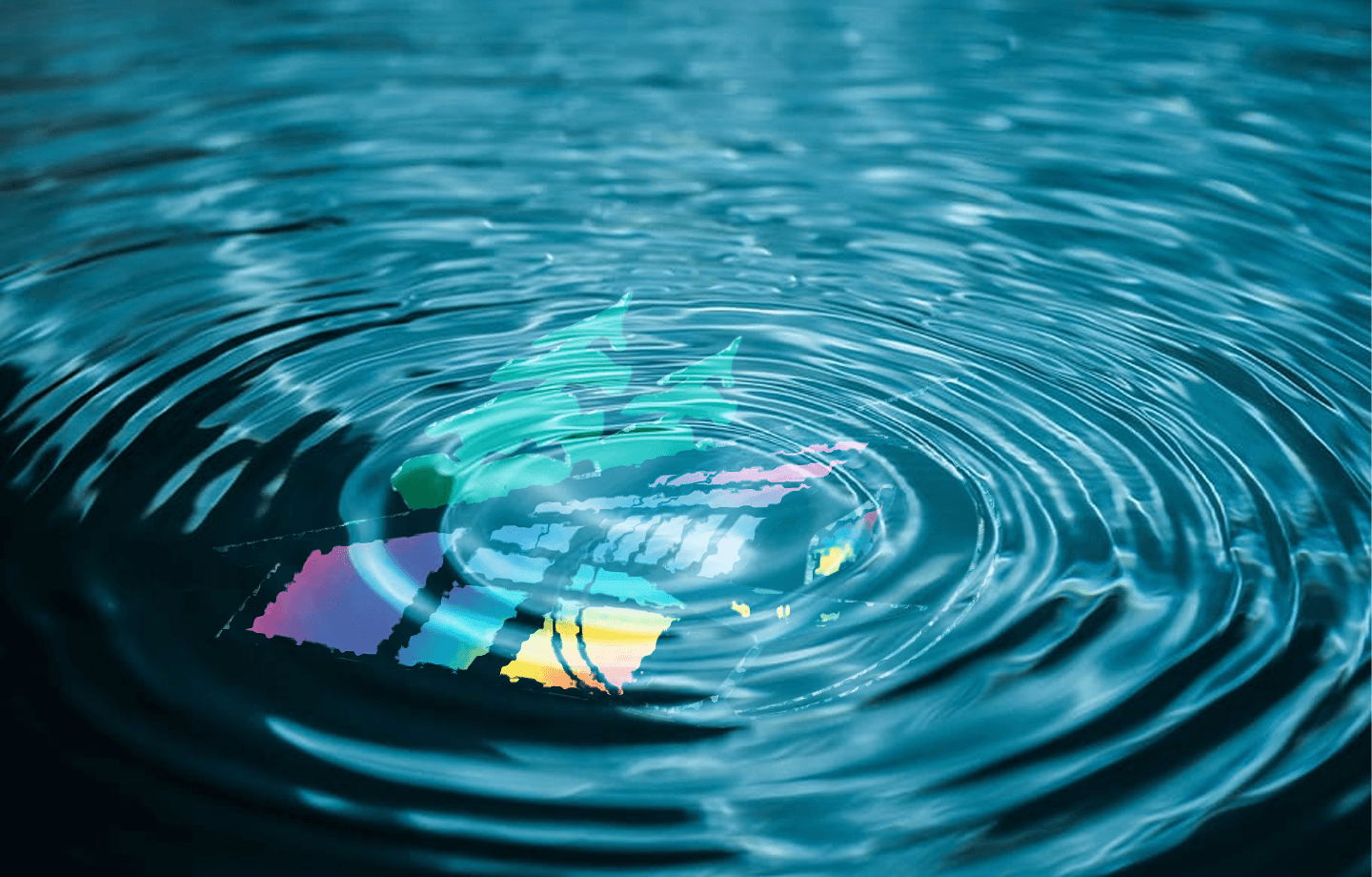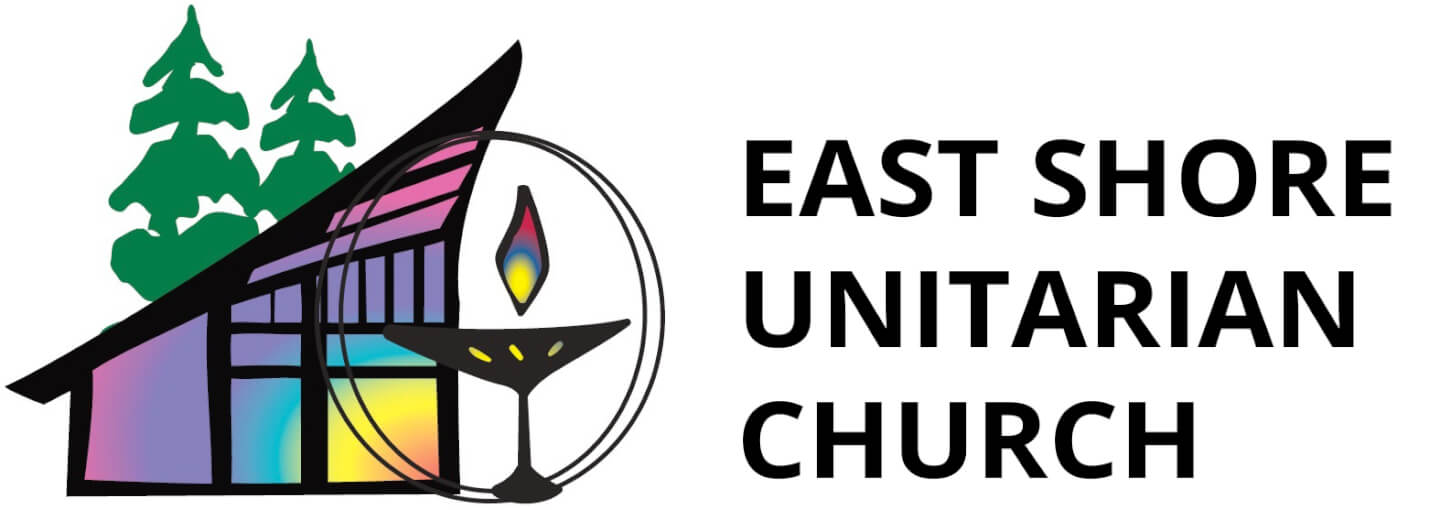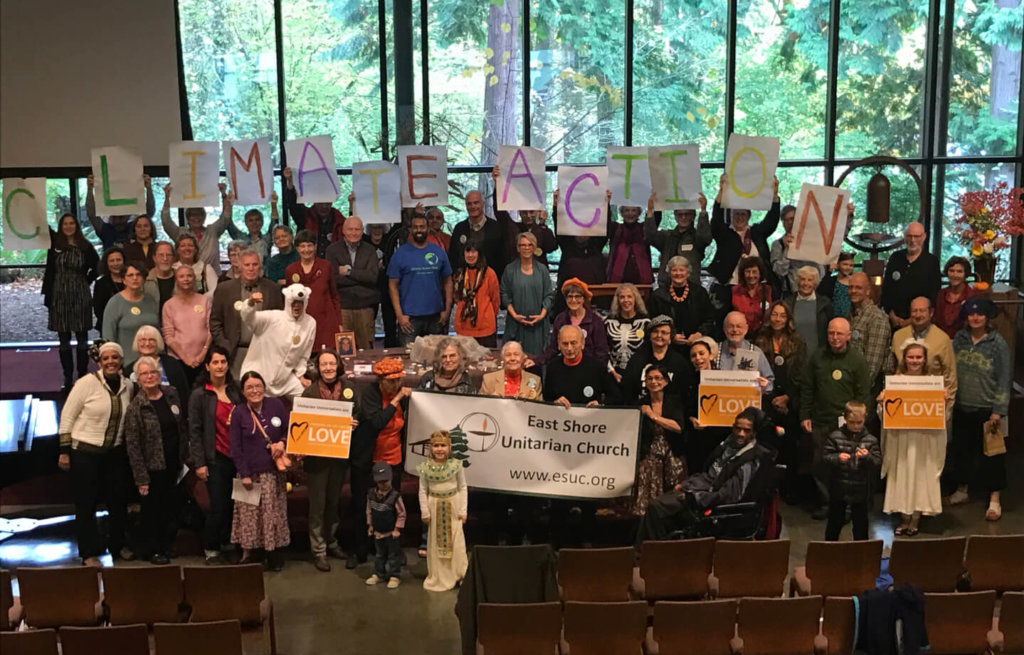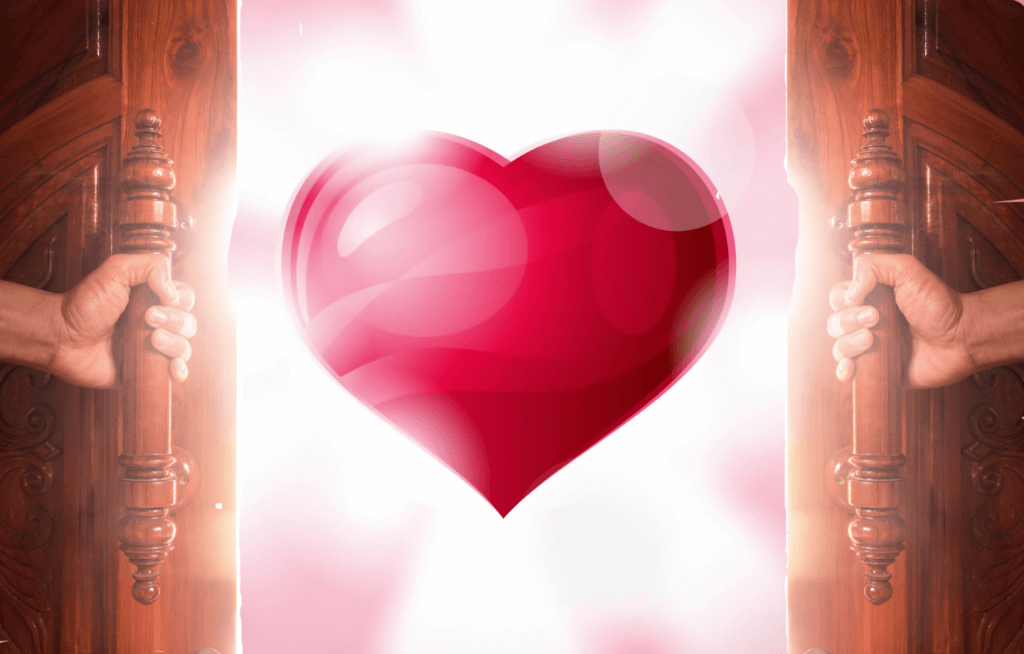
- This event has passed.
Listening to Water’s Wisdom
Sunday, April 10 @ 10:30 am - 11:30 am


In the face of ecological heartache, how do we hold both grief and love together in a way that connects us to nature’s wisdom? Join us for our Earth Day service as we explore this question through nature’s rhythms, seasons and cycles of life.
Rev. Jennifer DeBusk Alviar is an ordained Unitarian Universalist minister and proud member of East Shore Unitarian Church. She recently completed her year-long eco-theology certificate program with an environmental nonprofit called Seminary of the Wild. As a faith leader and community bridge-builder, she cultivates positive relationships with schools, churches and nonprofits for retreat facilitation workshops and service learning projects. Rev. Alviar is currently engaged with East Shore’s Indigenous Connections Team as part of its commitment toward racial justice and anti-oppression work with UU’s 8th Principle. She received her Master of Divinity degree at Starr King School for Ministry in Berkeley, California. She lives with her family on the traditional land of the Duwamish people known as Seattle, Washington.
how to attend
In person participants MUST BE VACCINATED! Read more about the process here.
• To virtually attend, please Zoom in using room number 989 3107 9078, passcode: chalice.
• To phone into the service, call 669-900-6833, Meeting ID: 989 3107 9078.
For those joining virtually, please mute as soon as you enter the room, so everyone can hear. Please note, the services will be recorded, but at this time, there are no plans to share the recording.
More Information
Both virtual and in person services are followed by coffee hour.
For the latest on Religious Education programs, click here.
Story for All Ages
Sermon Audio
Listening to Water’s Wisdom
Sermon Text
SEMINARY OF THE WILD
This time last year in April 2021, I embarked on a yearlong eco-theology certificate program called Seminary of the Wild. Its purpose was designed to engage us in “re-wilding” what has been tamed and domesticated in ecology and religion, as well as in our own psyches.
Let me unpack this a bit for you. Imagine yourself becoming an “apprentice” to nature. The natural world is your guide imbued with innate knowledge and wisdom. You are a learner with a beginner’s mind – open and curious to gain new insights from a posture of humility. Do you feel the refreshing invitation that this apprenticeship model offers? As an apprentice, you are not assuming mastery and control over the natural world. Instead, you are honoring the earth’s wisdom and recognizing your inherent connection to, rather than separation from, nature’s ecosystems.
This re-wilding process, however, is anything but graceful. Humans are bumpy, awkward, meddling beings. We like to be in control. Assert our control. History is filled with such examples which has brought us to today’s environmental crisis. So how do we proceed? How do we conduct ourselves? How do we enact environmental social change?
What I will share with you today is my apprenticeship journey with the natural world through the lens of imagery and storytelling. I will also highlight how each of the four seasons has shaped my unfolding relationship with nature and its impact on my faith.
SPRING
Like any relationship, it takes time to get acquainted, build trust and find one’s rhythm with nature. Yet I couldn’t imagine a better season than spring for new beginnings. So, I stepped out of my home early one spring morning and meandered along a wooded path leading toward Lake Washington.
Mt. Rainier must have sensed my hopeful yet somewhat shy demeanor because her landscape graciously mirrored my mood and intent. She greeted me with calm water and soft lighting. I felt soothed and eased by her gentleness.
Next, I found myself before a stump with moss, ferns and ivy growing out of her trunk.
I peered around the corner and noticed her roots pulled up from the earth.
I recalled that fallen trees are often referred to as “nurse logs.” According to an environmental site called American Forests, nurse logs provide ‘ecological facilitation’ as they decay, offering seedlings shade, nutrients, water and protection from disease…making way for the new generation.” I marveled at this nurse log’s unique gifts of generativity and transformation.
Further down my path I came to a shallow, pebble-strewn alcove nestled between two shrubs. I chose this intimate, watery habitat as my daily meditation sit spot where I welcomed each morning over my yearlong program.
As I gradually rose, prepared to return home, I heard a light ringing of what sounded like wind chimes. I followed the sound, peered around the corner and smiled at the sight. The tinkling sound came from a marina full of boats. They rang like an outdoor cathedral. Perhaps a blessing of the bells.
This communing with nature is a funny sort of thing. Everything is right there before us. The marina’s outdoor cathedral bells. The nurse log’s gifts of generativity and transformation. Mystery itself isn’t so much hidden and secretive. It’s just that western civilization has conditioned us to believe that we are separate from nature rather than inherently connected to nature.
Consequently, we haven’t learned to attune our senses to the natural world and read her landscape and language. This is the work of repairing and healing this artificial human/nature divide that is harming our environment due to our lack of awareness resulting in our lack of accountability.
SUMMER
Spring gave way to summer. And summer greeted me with her sheer beauty and boldness. Mt. Rainier’s white, snow-capped peaks shown brilliantly against a deep, blue, cloudless sky. Magenta sweetpeas grew wild along the banks of the lake.
I felt a longing stir inside me. In order for me to embody a wilder theology, I wanted to experience a more direct connection with water as my guide. Not just dipping my toes on the banks of the lake. But rather feeling my body contained in a boat on the water with her wild currents moving just beneath me. What a beautiful, sacred threshold experience that would be!
Fortunately, an opportunity arose that summer turning this longing into a wild calling. My mother invited our whole family to canoe down the Missouri River in partnership with her active engagement with a conservation organization called American Prairie located in Bozeman, Montana. This environmental organization’s mission is to “create the largest nature reserve in the contiguous United States, a refuge for people and wildlife preserved forever as part of America’s heritage.”
Here is a photo of our whole family standing on the prairie with the Missouri River behind us.
And here is a photo of my immediate family with my husband, Christopher, and our daughter, Madeline. On a geographical note, we began our river trip in the town of Fort Benton near Great Falls and finished at the campground of Judith Landing near the town of Lewistown, Montana.
Below are a few more highlights of river and rock formations.
From a theological perspective, every angle I witnessed evoked in me an awareness of life’s impermanence. This landscape of seemingly solid rock belies the realities of erosion. It is a landscape etched and sculpted by wind, sand, water and time. Experiencing this landscape reminded me of the eastern philosophy of Taoism. Stephen Mitchell, one of the many translators of the Tao Te Ching, wrote these words:
Nothing in the world is as soft and yielding as water. Yet for dissolving the hard and inflexible, nothing can surpass it. The soft overcomes the hard. The gentle overcomes the rigid. Everyone knows this is true. But few can put it into practice.
What a challenge set before us all! How do we put into practice, with humility and awareness, the erosion of climate change? I held this visual landscape in my mind’s eye, accompanied by its ecological heartache. For three days, I paddled. Some days, I paddled as many as 21 miles down the river. I spent this time listening. Observing. Pondering. I felt my way through these penetrating questions against Montana’s big sky country. This embodied experience helped me cultivate an intimate relationship with water. It moved me into an interior space where I experienced beauty, longing, grief and love all at once.
AUTUMN
Summer gave way to autumn. I returned home feeling inspired, engaged and curious. I wanted to embody the lessons I learned from Montana’s river trip and adapt them to my own local habitat. In my case, I live on the traditional land of the Duwamish people known as Seattle, Washington. Therefore, Cascadia is my bioregion and Cedar River is my watershed.
Early one morning at sunrise, I spotted a team of rowers along Lake Washington. Once again, I experienced that wild calling to connect more directly to water with the kind of intimacy that I felt while canoeing down the Missouri River.
I followed the direction of the boat to see where it might lead. This path led me to Mount Baker Rowing and Sailing Center. Intrigued and inspired, I decided to join the local community crew team for introductory rowing lessons. Why not?! Here is a photo of some of my fellow crew team members.
And here are a few rowing highlights.
I am now six months into my yearlong eco-theology program with Seminary of the Wild. This marks a true liminal threshold. Given my nature-based, experiential encounters with Montana’s canoe trip and Lake Washington’s crew team, I pause to reflect on this moment. I wonder. Have these experiences made me feel more connected with nature rather than separate from it? And, do I feel more grounded and embodied in my theology as a result of my relationship with the natural world?
I check in with my body and notice something surprising. Disturbing. The more intimately engaged and connected I feel with the natural world, simultaneously I feel more unsettled. Off-center. This sense of disequilibrium is further heightened by devastating climate change and mourning the loss of our biodiversity. I pause and feel my way into this tension between grief and loss on the one hand, and love and tenderness on the other. I find myself drawn to explore these questions within my own context as a woman, mother and female religious leader.
I reflect on a passage from nature writer Terry Tempest Williams’ book, Erosion:
Whatever I know as a woman about spirituality, I have learned from my body encountering earth. Soul and soil are not separate. Neither are wind and spirit, nor water and tears. We are eroding and evolving at once like the red rock landscape before me. Our grief is our love. Our love will be our undoing.
How do I hold in tandem both grief and love in a way that does not completely undo me? I tried approaching this question from a different angle. Aren’t some of life’s sorrows so deeply wounding that we are ultimately unraveled and undone? Yet when I read Francis Weller’s book, The Wild Edge of Sorrow, he affirmed a similar sense of integration, healing and wholeness around sorrow.
Grief and love are sisters, woven together from the beginning. Their kinship reminds us that there is no love that does not contain loss and no loss that is not a reminder of the love we carry for what we once held close.
Maybe this undoing is a good thing after all. This erosion of landscape and soulscape, physical and emotional, keeps us humble, grounded, and connected to nature’s wisdom. If we are willing to be broken open and reshaped by the contours of life’s wild edges, then perhaps we are capable, in the words of Walt Whitman, to “contain multitudes.”
WINTER
Autumn gave way to winter. Now as I entered my fourth season, I had come to respect and honor the rhythms, seasons and cycles of life. This process deepened my understanding of the inextricable connection between grief and love. But nothing prepared me for what would come next.
In early December Diane, my Seminary of the Wild cohort, clan member and friend, shared devastating family news. Her 28-year old son, Cameron, died tragically from a rock climbing accident. I felt grief-stricken, numb and at a loss for words. Yet Diane, a newly bereaved mother, found the words she needed to express her grief. She wrote a poem early in the morning on Christmas that she titled, “Christmas Dawn.”
Christmas Dawn
Stories of old speak of a baby boy born this day to show us how to live and love.
Another baby boy was also born to show me how to live and love.
They both were taken from this world not after a long life, but in their prime.
We could not have known how these tragedies would change our world and break our hearts.
Life is never more precious than when it is paired with death.
To die to our expectations is to truly live.
Fear not, live in love, knowing our hearts will break, then love again.
The day after Christmas, December 26th, Seattle greeted us with a white winter. The world felt soft and still in its thick blanket of snow. I contemplated Diane’s poem – especially these two lines:
Life is never more precious than when it is paired with death.
To die to our expectations is to truly live.
I carried her words with me as I stepped outside and began walking in the freshly fallen snow. Instinctively, I placed my gloved hand on the snow-covered nurse log as a way to connect my human body with nature’s touch.
This nurse log once lived the life of a towering, majestic tree. Some form of death befell her. And yet, she continued to birth new life in her altered form. Transformation is possible, even in the face of death.
Next, I crossed the snow-covered bridge through the woods that opened out onto the hillside and lake.
When I reached my meditation sit spot, I beheld a spectacular sculpture of ice crystals with a bird flying over a cloudy sky.
As I shifted my gaze and body posture toward a different angle with different lighting, blue sky appeared. These same ice crystals seemed to dance with the branch’s graceful curves encased in ice and sunshine.
Finally, I reached the marina. The boats greeted me with their tinkling sound of bells ringing from their outdoor cathedral. Light, gentle and soothing.
And there, in that moment of lightness, I recalled a poem by Jarod Anderson highlighting life’s changing forms, yet enduring essence.
The water in your body is just visiting. It was a thunderstorm a week ago. It will be the ocean soon enough. Most of your cells come and go like morning dew. We are more weather pattern than stone monument. Sunlight on mist. Summer lightning. Your choices outweigh your substance.
SUMMARY
This yearlong eco-theology program has made me rethink the meaning of the word “faith.” So often we associate faith with something solid. As in, “This is the bedrock of my faith.” “This is the cornerstone of my belief.” A solid, unshakable faith. Yet my experience canoeing down the Missouri River reflected a much more fluid, nuanced existence. This watery habitat reminded me that nothing is as solid as it seems. We are all shapeshifters whose identities are more permeable than we realize, or might care to admit. There is a wild edge here. But this wild, untamed element is what makes me feel most alive.
What is often asked of religion is this: “What do you believe in?” What is frequently expected is some form of a creed-based response. However, I don’t believe that this traditional Q&A gets to the heart of what truly matters. Instead, I propose reframing the question in these words: “What do you pay attention to?” Specifically, what nature-based practices do you engage in to help you remember and honor your innate belonging to the earth and creation? How do you attune your senses to read nature’s landscape and language leading to greater awareness and accountability toward caring for the environment?” Life is dynamic, not static. As Mary Oliver expressed in her poem, A Summer’s Day, “I don’t know what a prayer is. But I know how to pay attention.”
BENEDICTION
Traveling these four seasons of nature and faith has affirmed for me this truth: Taoist philosopher Lao Tzu was right. “Nothing in the world is as soft and yielding as water. Yet for dissolving the hard and inflexible, nothing can surpass it.”
May we stay soft and flexible in caring for the earth, as well as caring for each other. And in the face of ecological heartache, may water’s wisdom remind us that we contain multitudes. We are more fluid and permeable than we realize. Grief and love will test our wild edges. But if we humbly yield to water’s currents, then we will be blessed by its re-wilding nature transforming our tamed, domesticated selves into our grace-filled wild selves. This is my prayer. May it be so. Amen, Shalom, Salaam, Namaste and Ashe.
Event Details
Transportation & Parking
Google Maps offers you door-to-door directions for driving, walking, biking, or public transit.
We have several parking lots. Our upper lot, off SE 32nd Street, is closest to our Sanctuary, it has handicap and stroller parking. There is a roundabout for drop-offs. Our lower, main parking lot is also off SE 32nd Street. There are stairs that will lead you up to the Sanctuary. If that lot is full, there is also street parking on 32nd Street.
Accessibility
Learn more about accessibility at East Shore here.




